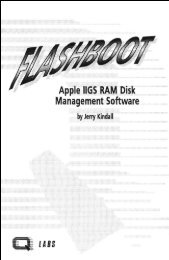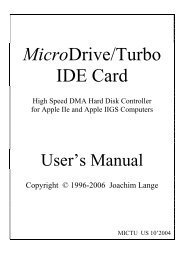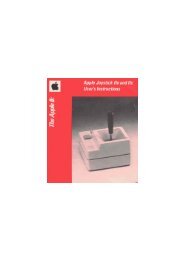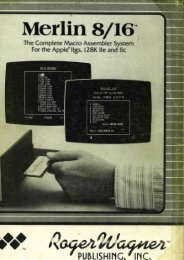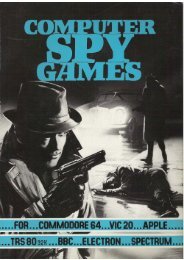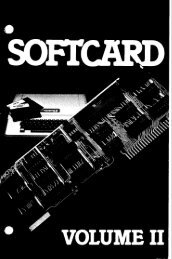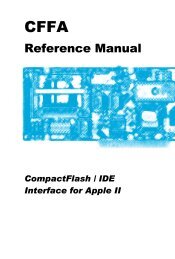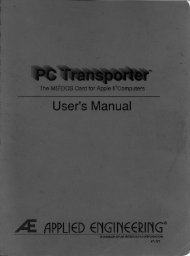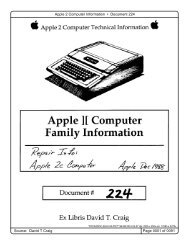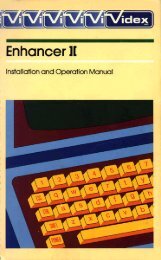w65c816s Microprocessor Data Sheet.pdf
w65c816s Microprocessor Data Sheet.pdf
w65c816s Microprocessor Data Sheet.pdf
Create successful ePaper yourself
Turn your PDF publications into a flip-book with our unique Google optimized e-Paper software.
The Western Design Center, Inc.W65C816S <strong>Data</strong> <strong>Sheet</strong>2.6 <strong>Data</strong> Bank Register (DBR)During modes of operation, the 8-bit <strong>Data</strong> Bank Register (DBR) holds the bank address for memory transfers.The 24-bit address is composed of the 16-bit instruction effective address and the 8-bit <strong>Data</strong> Bank address. Theregister value is multiplexed with the data value and is present on the <strong>Data</strong>/Address lines during the first half of adata transfer memory cycle for the W65C816S. The <strong>Data</strong> Bank Register is initialized to zero during Reset.2.7 Direct (D)The 16-bit Direct Register (D) provides an address offset for all instructions using direct addressing. The effectiveDirect Address is formed by adding the 8-bit instruction Direct Address field to the Direct Register. The DirectRegister is initialized to zero during Reset. The bank address for Direct Addressing is always zero2.8 Index (X and Y)There are two general purpose registers that are commonly referred to as Index Registers (X and Y) and arefrequently used as an index value for calculation of the effective address. When executing an instruction withindexed addressing, the microprocessor fetches the OpCode and the base address, and then modifies the addressby adding an Index Register contents to the address prior to performing the desired operation. Pre-indexing orpost-indexing of indirect addresses may be selected. In the Native mode (E=0), both Index Registers are 16 bitswide where the Index Select Bit (X) of the Processor Status (P) register equals zero. If the Index Select Bit (X)equals one, both registers will be 8 bits wide, and the high byte is forced to zero.2.9 Processor Status Register (P)The 8-bit Processor Status Register (P) contains status flags and mode select bits. The Carry (C), Negative (N),Overflow (V), and Zero (Z) status flags serve to report the status of most ALU operations. These status flags aretested by use of Conditional Branch instructions. The Decimal (D), IRQ Disable (I), Memory/Accumulator (M),and Index (X) bits are used as mode select flags. These flags are set by the program to change microprocessoroperations.The Emulation (E) select and the Break (B) flags are accessible only through the Processor Status Register. TheEmulation mode select flag is selected by the Exchange Carry and Emulation Bits (XCE) instruction. Table 8-1,W65C816S Compatibility Information, illustrates the features of the Native (E=0) and Emulation (E=1) modes.The M and X flags are always equal to one in Emulation mode. When an interrupt occurs during Emulation mode,the Break flag is written to stack memory as bit 4 of the Processor Status Register.2.10 Program Bank Register (PBR)The 8-bit Program Bank Register (PBR) holds the bank address for all instruction fetches. The 24-bit addressconsists of the 16-bit instruction effective address and the 8-bit Program Bank address. The register value ismultiplexed with the data bus and presented on the <strong>Data</strong> bus lines during the first half of a program memory cycle.The Program Bank Register is initialized to zero during Reset. The PHK instruction pushes the PBR register ontothe Stack.The Western Design Center W65C816S 9




